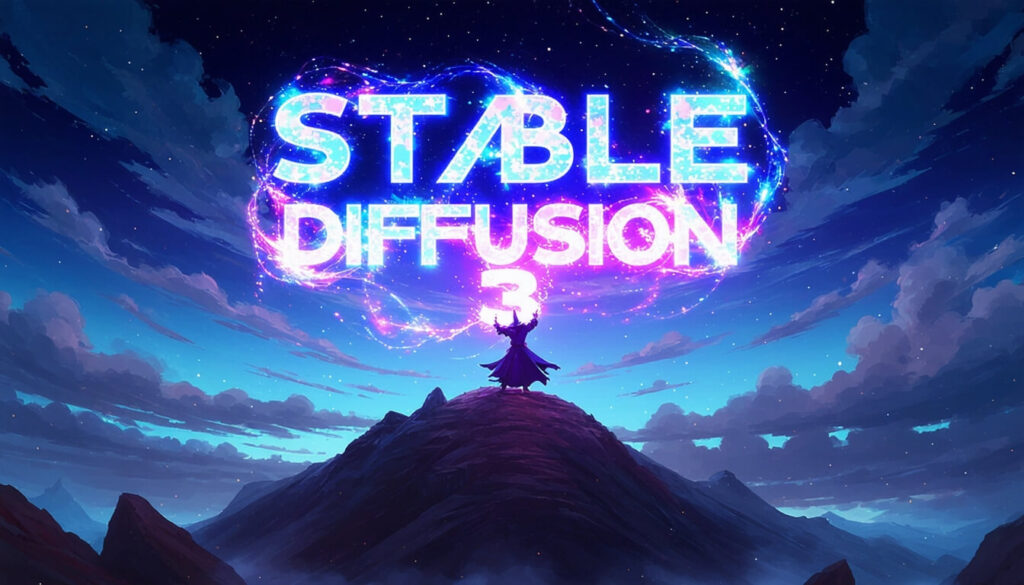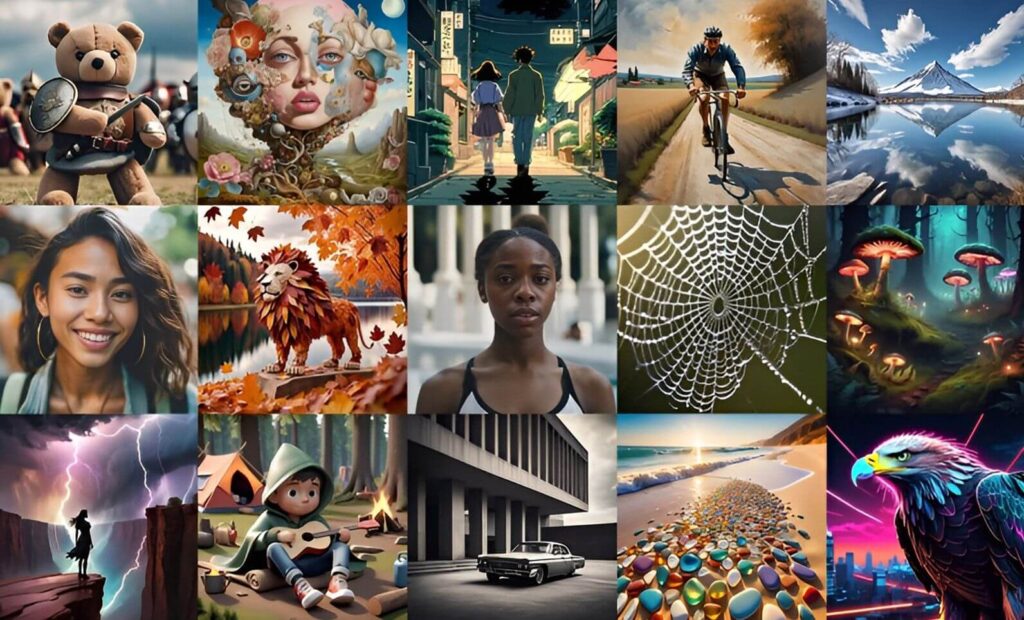Stable Diffusion is the most powerful neural network in the history of generative art. Let’s figure out how it can be used in creatives.

Neural networks are gradually taking over the world. This is no longer a prank or entertainment, but a full-fledged working tool for many companies. Today, we will tell you about Stable Diffusion, what it is and how to use it.
What is Stable Diffusion?
Stable Diffusion is a generative artificial intelligence model that can be used to transform text and detailed hints into unique photorealistic images. Stable Diffusion is one of the three most popular neural networks for image generation. SD is developed by Stability AI and its CEO Imad Mostak. The first Stable Diffusion was launched in 2022 and can be used to create not only images but also videos and animations. The model is based on diffusion technology and uses hidden space, which significantly reduces processing requirements. Moreover, it can be run on desktops or laptops equipped with graphics processors. With transfer learning, the Stable Diffusion model can be customized to your specific needs using as few as five images.
The public release of Stable Diffusion is undoubtedly the most important and significant event in the world of graphical neural networks. We are sure this is just the beginning.
“As our models are faster, better, and more specific, we can expect their quality to increase in all areas. Not just images, but starting next month, audio as well, and then we’ll move on to 3D and video. Language, code, and more machine learning now…” – wrote Stable Diffusion founder Imad Mostak on Twitter.
Let’s consider the advantages of Stable Diffusion:
- the possibility of free use in the console and free tariffs on sites and services
- you can use other people’s images, they are not copyrighted, are in the public domain and are available under the CC0 1.0 Universal Public Domain Dedication license
- open source
- high quality of generated images
- the availability of various options for working: using the console, through sites, programs, or Telegram bot
- Creative ML OpenRail-M license, which allows commercial use
- Version with a graphical interface has advanced settings.
Disadvantages include:
- the author does not have copyright to the created image, it is in the public domain
- Working with source code or a program on a PC requires high computer power
- to work with the source version, you need programming skills and program configuration
- PC programs and websites are not always updated promptly and use the latest version.

How can Stable Diffusion be used in creatives?
Stable Diffusion’s capabilities include text-to-picture and image-to-picture conversion, graphic generation, image editing, and video creation. Let’s take a closer look.
- Text to image conversion. This is the most common way to use Stable Diffusion. The model creates an image using a text hint. You can create different images by changing the seed value for the random number generator or changing the noise reduction mode for different effects.
- Convert image to image. You can create new images using an input image and a text prompt. Often, a thumbnail and a tooltip are used for this purpose.
- Create graphics, illustrations, and logos. Using a set of tips, you can create illustrations, graphics, and logos in different styles. Of course, it’s impossible to determine the result in advance, although you can guide the creation of a logo with a sketch.
- Edit and retouch images. Use AI Editor to upload an image and use an eraser to mask the area you want to edit. Then, after generating a hint that defines what you want to achieve, edit the image or draw details.
- Create a video. The Deforum feature of GitHub allows you to create short video clips and animations using Stable Diffusion. Another use is to add different styles to videos. You can also animate photos to create the appearance of movement, such as water flowing.

Important: Google developers have achieved a significant breakthrough by ensuring that the Stable Diffusion model performs well when generating images on a mobile phone in 12 seconds. However, the Stable Diffusion model has about 1 billion parameters, which requires a lot of resources. Thus, AI generation models running on mobile phones are getting closer to reality.
The neural network has recently been updated to a new version, which the developers themselves call“the most advanced image generation model to date”.Stable Diffusion 3 Medium has several important updates compared to its predecessors:
- More productive
- more stable
- more accurate in terms of both generation quality and accuracy of compliance with the set promt.
It also skillfully manages not only images but also text. However, the main feature of Stable Diffusion 3 Medium is the ability to solve usually difficult tasks for AI generators, including the creation of photorealistic images (even hands and faces) and text on pictures without artifacts and spelling errors. The neural network makes fewer mistakes now, but works well only with the English language.
Conclusion
Stable Diffusion is a top neural network for image generation. It can be a powerful tool for work and commercial use. SD can be used in different ways: in the console, on websites, applications, and services, and with chatbots. If you have a weak computer, websites are suitable, and if you have a powerful computer and programming skills, you can work in the console. We recommend using Stable Diffusion for those who are interested in image generation, AI, or creativity. It will be a great first neural network to work with and will please you with its quality.


